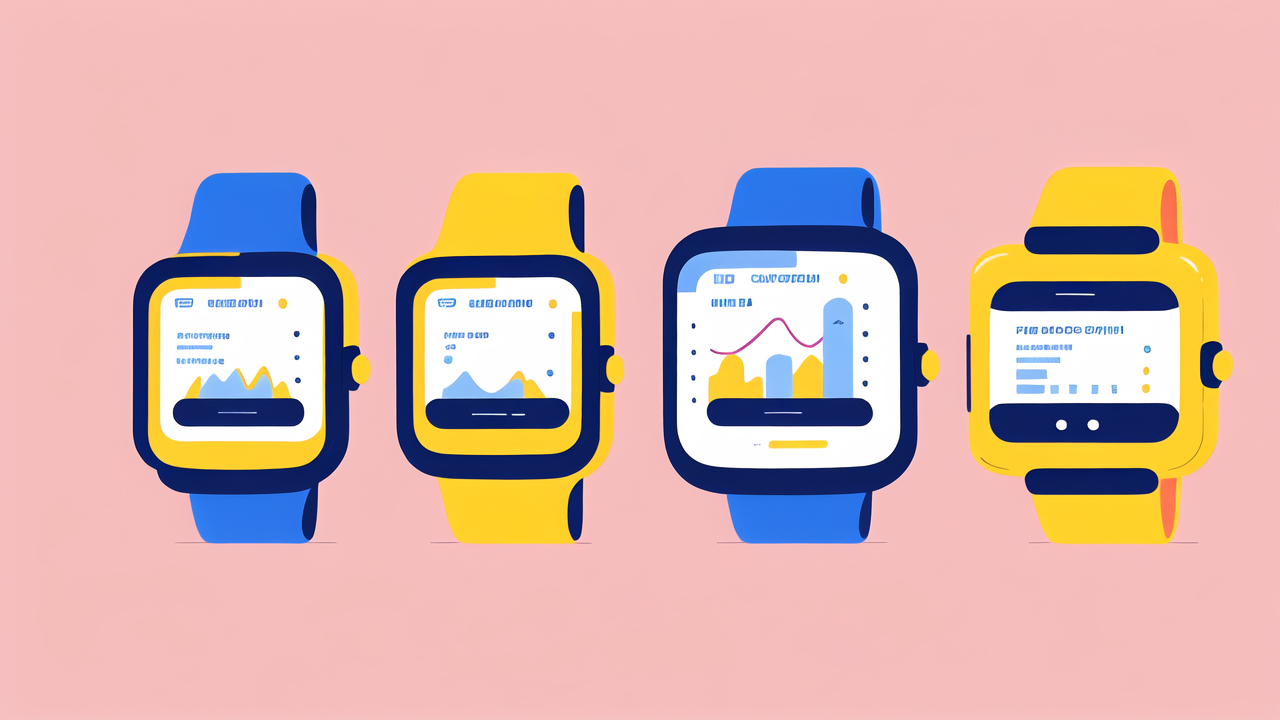The History of Wearable Technology: How It All Started
The Advent of Fila Watches and Wearable Fashion
Wearable tech began with simple timekeeping devices. Fila watches were among the early pioneers. They combined fashion with function, making timepieces a style statement. These watches were more than just tools. They became accessories that reflected personal taste. Fila's approach paved the way for future wearables. It showed that tech could be both useful and fashionable. This blend of style and utility became a key feature of later devices. As technology advanced, so did the potential of wearable gadgets. Fila's influence can still be seen in modern smartwatches and fitness trackers.

Innovations in Consumer Electronics: A Timeline
The journey of wearable tech is marked by key milestones:
- 1970s: Digital watches emerge
- 1980s: Casio calculator watches gain popularity
- 1990s: Early attempts at wearable computers
- 2000s: Bluetooth headsets become common
- 2010s: Fitness trackers and smartwatches take off
- 2020s: Advanced health monitoring devices enter the market
Each step brought new features and capabilities. Digital watches added more functions than just time. Calculator watches put computing power on the wrist. Early wearable computers, though bulky, showed future potential. Bluetooth headsets made hands-free communication easy. Fitness trackers introduced health monitoring to consumers. Smartwatches combined multiple functions in one device. Today's devices offer advanced health tracking and more.
From Fila to Fitbit: Tracing the Evolution
The path from Fila watches to Fitbit is a story of rapid progress. Fila's stylish watches set the stage for wearable tech as fashion. This idea evolved as technology improved. The focus shifted from just telling time to tracking health. Pedometers were an early step towards fitness tracking. They counted steps and estimated distance walked. Next came devices that monitored heart rate and sleep patterns. Fitbit combined these features into a sleek, user-friendly package. It made health tracking accessible to the masses. The success of Fitbit inspired many competitors. It showed the huge market potential for health-focused wearables. This evolution continues today with even more advanced devices.
Current State of Health Tracking Wearables in the US Market
Key Players and Market Leaders in Health Tracking
The US health tracking market is dominated by a few major players:

- Apple: Leading with the Apple Watch
- Fitbit: Known for dedicated fitness trackers
- Garmin: Popular among athletes for advanced sports tracking
- Samsung: Offering smartwatches with health features
- Google (Wear OS): Powering various brands' smartwatches
These companies compete with constant innovation. They add new features and improve accuracy. Apple leads in smartwatch sales and health tracking integration. Fitbit focuses on fitness-specific devices with long battery life. Garmin targets serious athletes with specialized metrics. Samsung combines health tracking with smartphone integration. Google's Wear OS powers a variety of third-party smartwatches. Each brand has its strengths, catering to different user needs and preferences.
Technological Advancements in Modern Health Trackers
Modern health trackers have come a long way. They now offer a wide range of features:
- Continuous heart rate monitoring
- Sleep tracking and analysis
- Blood oxygen level measurement
- ECG capabilities
- Stress level detection
- Menstrual cycle tracking
- Fall detection and emergency alerts
These devices use advanced sensors and algorithms. They provide more accurate and comprehensive data. Many can now detect irregular heart rhythms. Some even offer early warning signs for conditions like sleep apnea. Improved battery life allows for 24/7 tracking. Water resistance enables swimming and shower use. Integration with smartphones enhances data analysis and presentation. Some trackers now include GPS for route tracking during outdoor activities. The goal is to offer a complete picture of the user's health and fitness.
Regulatory Considerations for Health Wearables in the United States
Health wearables face increasing regulatory scrutiny in the US. The FDA plays a key role in overseeing these devices. Wearables that make medical claims must meet FDA standards. This ensures accuracy and safety for users. Many devices are classified as "wellness" products to avoid strict regulation. However, as features become more advanced, this line blurs. Privacy is another major concern. HIPAA regulations may apply to some health data collected. Companies must ensure proper data protection and user consent. There's ongoing debate about the accuracy of wearable health data. Balancing innovation with safety and privacy remains a challenge. As technology advances, regulations will likely evolve to keep pace.
The Future of Wearable Technology: What's Next for Health Tracking?
Integrating AI and Machine Learning into Health Tracking Devices
AI and machine learning are set to revolutionize health tracking. These technologies can analyze vast amounts of data. They can spot patterns and trends that humans might miss. Future devices may predict health issues before symptoms appear. AI could offer personalized health advice based on individual data. Machine learning algorithms could improve accuracy over time. They might detect subtle changes in heart rhythm or sleep patterns. This could lead to early detection of conditions like heart disease or sleep disorders. AI could also help users understand their data better. It could provide context and actionable insights. The challenge lies in making these advanced features user-friendly and accessible.

The Role of Virtual Reality and AR in Health Monitoring
Virtual and augmented reality are entering the health tracking space. VR could revolutionize how we visualize health data. It might offer immersive experiences for fitness training. AR could overlay health info in real-time during activities. Imagine seeing your heart rate while running, right in your field of view. VR might help with stress reduction through guided meditation experiences. It could also assist in physical therapy, providing visual feedback. AR could aid in nutrition by identifying food content and calories. These technologies could make health tracking more engaging and intuitive. They might encourage users to take a more active role in their health. The key will be balancing immersion with practicality in daily use.
Ethical Considerations and Data Privacy in Wearable Health Technology
As health wearables become more advanced, ethical concerns grow. Data privacy is a major issue. These devices collect sensitive personal health information. Ensuring this data is secure and used ethically is crucial. Questions arise about who owns the data collected. How it can be used and shared needs clear guidelines. There's also the risk of over-reliance on technology for health decisions. Balancing tech insights with professional medical advice is important. Wearables might create new forms of discrimination. For example, insurance companies might use data to set rates. Employers could potentially misuse health data in hiring decisions. Addressing these ethical concerns will be vital for the future of wearable health tech. It will require cooperation between tech companies, regulators, and healthcare providers.




Leave a comment
This site is protected by hCaptcha and the hCaptcha Privacy Policy and Terms of Service apply.